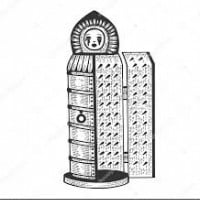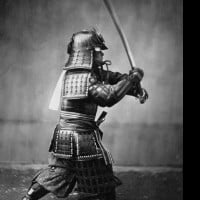Top Ten Myths and Misconceptions About the Middle Ages
The Middle Ages were a time period in history that lasted from the fall of the Western Roman Empire in 395 A.D. to the start of the Renaissance around 1500. During the Enlightenment Era in the 1700s however, philosophers wanted to paint the Middle Ages as a more uncivilized era compared to their enlightened time period. Some of these myths that were created in this time period are still widely believed today. Here, we are looking at the top ten myths and misconceptions about the Middle Ages.
One of the most prevalent myths about the Middle Ages was that around the time, most people thought the earth was flat. Despite that however, virtually everyone by this time knew the earth was round. In fact, it had been common knowledge that the earth was round for over a thousand years before the Middle Ages. The Ancient Greeks had not only figured this out, but they nearly completely accurately measured the circumference of the planet. To go along with this, Christopher Columbus never set sail to prove the earth was round. Both he and the Spanish monarchy already knew this. He was just looking for a western route to India, so ships wouldn't have to travel around Africa. During this time, the Church had also accepted that the earth was in fact round.

The Middle Ages were definitely a brutal time. Some of the most barbaric torture devices ever conceived came out of this era. Yet despite that, one of the most recognizable devices of the time, the Iron Maiden, was actually never used. While some have been found, the evidence that they were ever used is circumstantial at best. Some believe that 19th Century historians found them and misinterpreted their use, and assumed that they were used as a torture device.
Good thing they were not actually used. This device gives a new meaning to claustrophobia.

The Vikings were a group of people from the Nordic countries that began their rise during the Middle Ages. They are also credited as the first Europeans to set foot in North America, when Leif Erikson did so around the year 1000. Now when we think of Vikings today, the image that pops into our heads is probably of a bearded man wearing a helmet with horns on it. Likely, the myth originated in the 1800s, with Scandinavian artists often portraying them in their paintings donning said helmets. Additionally, no horned helmet artifacts have been found in the places where the Vikings pillaged, indicating that they never wore them. However, despite the Vikings themselves never having worn these helmets, civilizations that existed thousands of years before them likely did. So some people wore horned helmets in history, but they came long before the Vikings.
A lot of people see the Middle Ages as a time where education was almost non-existent and there was no progress in anything education or science related. While the common peasant likely didn't know how to read, the wealthier people of the time still did get higher education. Some of the top universities in the world were founded during the Middle Ages, such as Oxford (1096) and Cambridge (1209). Additionally, some of the greatest structures ever built came during this era. Many of the churches and castles built indicate that high knowledge of mathematics and architecture were needed.
Now, the Middle Ages were definitely not the most sanitary and clean times. The Black Death happened for a reason, and people still threw their sewage out onto the streets. But people weren't all disgusting around this time. In fact, it was understood that hygiene was very important. Believe it or not, soap existed during this time, and Spain, Italy, and the Middle East were the largest producers of it. The physicians of the Middle Ages often stressed bathing often, and there was especially an emphasis on keeping your hair clean. Oral hygiene was also important, and while there were no toothbrushes or toothpaste, people used linen cloths to get food out of their teeth. The Middle Ages weren't a clean era by any means, but it wasn't as bad as people say it was.

A lot of people assume witch hunts and burnings were a common practice during the Middle Ages. But believe it or not, people just got the eras mixed up. In fact, witch hunts and burnings did not become a thing until the 17th and 18th Centuries, hundreds of years after the end of the Middle Ages. Witch trials were actually outlawed in places such as Hungary and Denmark during this time. Witches weren't really a concern during the Middle Ages, but they actually ramped up during the Renaissance and beyond.
Another common belief is that the Catholic Church was against science and that the Bible was to be taken literally. The Church was actually an avid supporter of science, as they believed learning about the world around them would help them become closer to God. Many of the great scientists of this time were actually monks and friars. Christian, Jewish, and Muslim scholars all also traded information with each other.
It's sad that many schools teach this, at least in my high school and in College, that's what history and philosophy teachers told us.

Generally, the more developed a place is, the higher the life expectancy of a person living there is. A lot of people think that most people of the Middle Ages died in their 30s or 40s. While it's true that life expectancy was not high during this time, many people made it to old age. Just look at the birthdates and death dates of historical figures who lived during this time.
The life expectancy was much shorter, but many did live to an older age.
One of the most common things we think of when we think about the Middle Ages are knights. Their full body metal armor is very recognizable, and has been for centuries. We tend to think of knights as well-respected and honorable men. The reality is though, a lot of these knights were ruthless and brutal. Often, they'd fight in wars waged by their lords against other lords, and any village in the midst of it would be slaughtered. The Church grew tired of this, and sent some of these knights off to the First Crusade, and they proceeded to essentially massacre Jerusalem during the siege of it in 1099. The point is, knights were brutal.

Now this isn't in Europe, rather Japan, but this is still during the Middle Ages. When most people picture them, they see them wielding a sword. However, it's definitely not the only weapon they used. Bows and spears were also used, and later on, guns were introduced to them.
The classic samurai armor and katana looks very cool, but many samurai used bows and spears. Thanks Hollywood.
Samurai used a variety of weapons.
Although executions certainly existed in medieval Europe, they were less common and less brutal than we commonly believe. The main offenses that resulted in an execution were serious offenses such as murder and treason and even then the most common methods were either a beheading or a hanging and were conducted privately, public executions were rare and considered a privilege for the wealthy. The more brutal methods such as sawing, boiling and burning were rarer than we think.
In early modern Europe (1500-1800) executions became more common, more brutal and more public. In the 19th and 20th centuries, European countries gradually reduced the number of capital offenses and with the exception of Belarus, capital punishment is now a thing of the past in 21st century Europe.
There's a handful of books, articles, and other media claiming that black pepper conceals the taste of rotten meat, but there's no evidence to back up this claim. Rotten meat is obviously poisonous regardless of what spices you put in so by common sense you must throw the rotten food out